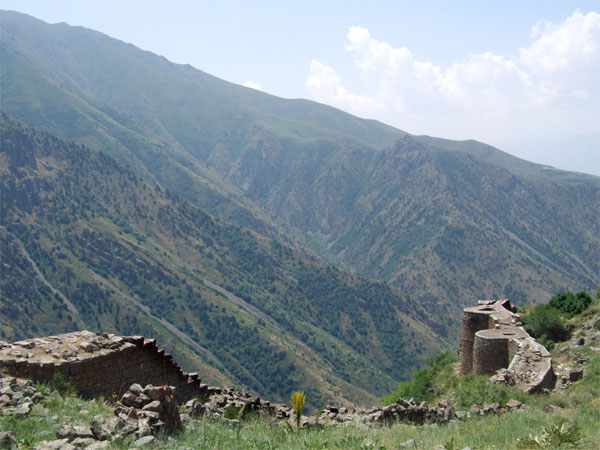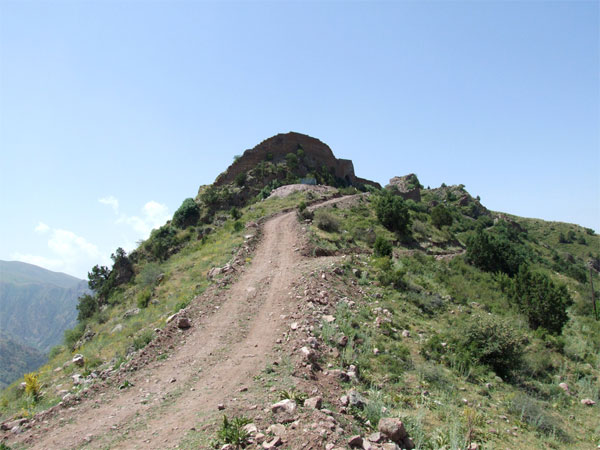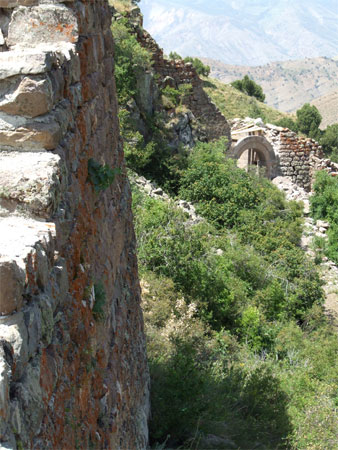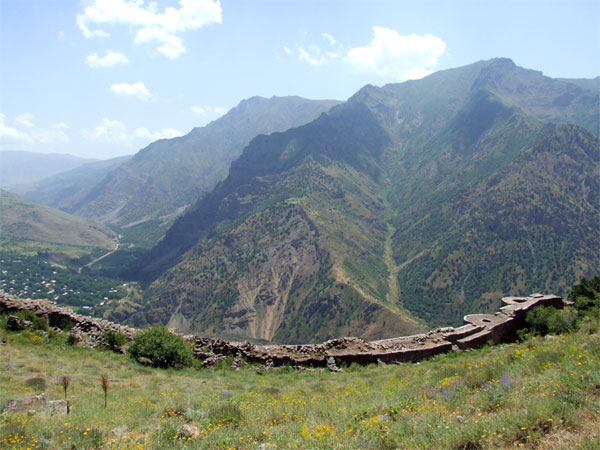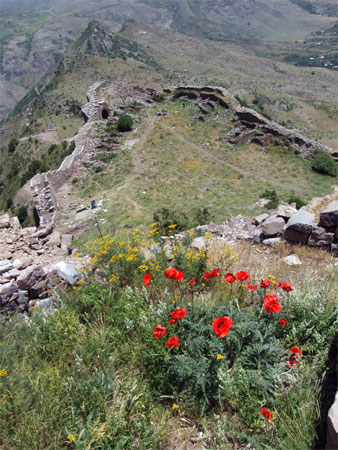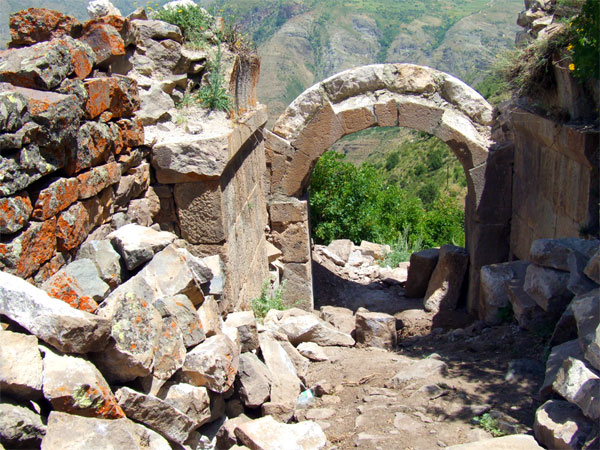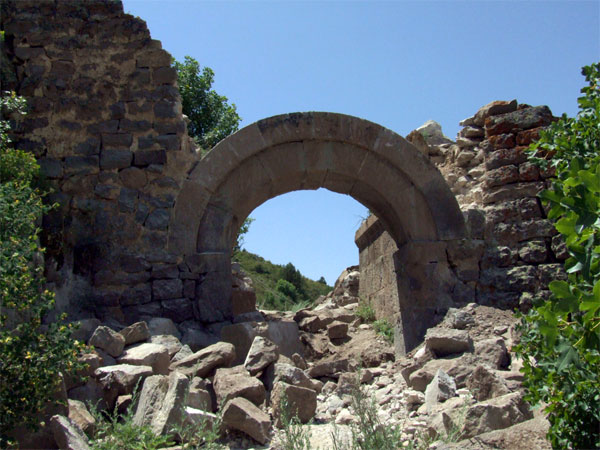-
Smbataberd
Smbataberd
Smbataberd (Smbatavan) castle lies to the southeast of Artabuink village (old Yeghegis) on top of a narrow mountain top. From here you can also see the village of Yeghegis (old Alayaz). On three sides the castle is protected by the ridge. The wall made it impregnable for most of its life, the mountain is approached only on its north end.
History
The fortress' masonry work and construction technique suggest the castle dates to the 10th-11th centuries, probably built during the reign of the Bagratuni king Smbat II Tiezerakal (“Master of the Universe”), when Armenia built a number of fortified complexes (including monasteries). Smbataberd may be the Symbace mentioned in the ancient Greek geographer Strabo's account of Atropatene. It reputedly was counted within the possessions of Atropatene (“Atrpatakan” in Greek and Roman sources) – regained by the Roman Empire when Armenia became subject to Rome.
Smbataberd probably existed before the 5th century and was used as a power base for the Vasakian Dynasty then reinforced during the reign of the Orbelians. Its original name is not known. People call it Smbataberd, perhaps because the nearby village of Yeghegis has the grave of Smbat Orbelian. Another Smbat (buried in Noravank) is said to have rebuilt the castle. It is more likely, though, that the castle was named for the 10th century Siunik prince, Smbat.
“When in 922 by the order of Yusuf amira of Atrapatakan (Atropatene or Media Atropatene) his general N's'r invaded Siunik, the ruling prince Smbat put up a defense in Yeghegis. The foes, seeing that they were unable to win, turned back.
And Smbat, who was a man of great wisdom, sitting peacefully in his own province, Vayots Dzor, having received the news about his arrival, he fortified his house and the whole strong province of Vayots Dzor. And he himself took his army and stationed himself at the royal castle in Yeghegik provincial town and surrounded it with a large garrison of officers.
Stepanos Orbelian
History of Sissakan (Siunik) -


